Disclosure: This article contains affiliate links. We may earn a commission from purchases at no extra cost to you, which helps our travel content.
Standing on the rooftop of my boutique guesthouse in downtown Tehran, watching the sun cast a golden glow over the snow-capped Alborz Mountains, I couldn't help but reflect on the concerned messages from friends and family before my departure. 'Is it safe?' 'Why would you go there alone?' Six days into my Tehran adventure, those worries feel worlds away from the reality I've experienced—a metropolis brimming with architectural marvels, millennia of history, and some of the warmest hospitality I've encountered in my years of solo travel. As someone who's made a career out of challenging investment assumptions, I've found that challenging travel assumptions can be equally rewarding. Tehran isn't just safe for solo female travelers—it's a revelation that deserves a prominent spot on your travel radar.
Navigating the Dress Code: What Solo Female Travelers Need to Know
Let's address the elephant in the room first: yes, there is a dress code in Iran, and as a foreign woman, you're expected to observe it. But it's far more straightforward than you might think.
Upon landing at Imam Khomeini International Airport, I changed into my pre-planned 'Iran outfit': loose-fitting pants, a tunic-length top, and a lightweight headscarf. The key is coverage, not specific styles. Your headscarf doesn't need to be tight—mine slipped back constantly (apparently a common tourist tell), and local women would kindly adjust it for me with understanding smiles.
I invested in a few versatile pieces before my trip, including a maxi dress that became my go-to for museum days. Paired with a light jacket and scarf, it was both comfortable and appropriate. For city exploration, I rotated between three loose tunics over jeans, which felt perfectly normal—many young Tehrani women dress similarly, just with more stylish flair!
What surprised me most was the vibrant fashion scene. In northern Tehran especially, women push creative boundaries within the requirements—colorful scarves, stylish manteaus (the overcoats women wear), and impeccable makeup. Far from the monochrome image often portrayed in Western media, Tehran's fashion landscape is diverse and expressive.

💡 Pro Tips
- Pack loose, lightweight tunics or dresses that cover your bottom and arms
- Bring multiple headscarves in different colors—they're a fashion statement, not just a requirement
- Comfortable walking shoes are essential—Tehran is sprawling and hilly
Safety and Solo Navigation: Tehran Beyond the Headlines
If I could dispel just one myth about Tehran, it would be about safety. As someone who's wandered through night markets in Southeast Asia and navigated maze-like medinas in Morocco, I can confidently say Tehran ranks among the safest cities I've visited as a solo female traveler.
The metro system deserves special mention—clean, efficient, and with women-only cars if you prefer. At just 2,000 tomans (about $0.05) per ride, it's incredibly affordable. I navigated the entire city this way, using the Tehran Metro app which works offline and made transfers between lines seamless.
Taxis are another great option, though negotiating fares requires some finesse. I recommend using Snapp, Iran's equivalent to Uber (you'll need a local SIM card). Having your destination written in Farsi is helpful, as English proficiency varies widely among drivers.
The biggest safety concern? Traffic. Crossing Tehran's bustling streets requires confidence and patience. Follow locals' lead, and you'll soon master the art of navigating between cars with relative ease.
Perhaps most surprising was the absence of harassment. While I prepared myself for unwanted attention (a reality in many countries), I experienced none. Instead, I encountered genuine curiosity and respectful interactions. When I stopped to photograph an architectural detail on Enghelab Street, a university professor approached not to bother me, but to offer historical context about the building's significance during the revolution.

💡 Pro Tips
- Get a local SIM card immediately—Irancell offers tourist packages at the airport
- Save your hotel's address in Farsi to show taxi drivers
- Use the women-only metro cars during rush hour for comfort, not just safety
Architectural Wonders: From Palaces to Contemporary Gems
As someone with a deep appreciation for architectural preservation, Tehran was an unexpected treasure trove. The city presents a fascinating timeline of Persian design evolution, from ancient palaces to striking contemporary structures.
The Golestan Palace complex, a UNESCO World Heritage site, became my architectural north star. I spent an entire morning wandering its 17 structures, mesmerized by the intricate mirror work in the Talar-e Aineh (Hall of Mirrors) that creates an almost psychedelic kaleidoscope effect. My travel camera barely captured the dazzling interplay of light and reflection—some experiences truly must be witnessed firsthand.
While historic sites rightfully dominate travel guides, Tehran's contemporary architecture deserves equal attention. The Tabiat Bridge (Nature Bridge) designed by young Iranian architect Leila Araghian is a masterpiece of modern urban design. I timed my visit for sunset, watching the structure's organic curves glow golden while families strolled and young couples found quiet corners for conversation.
The former American Embassy (now the US Den of Espionage Museum) presents a different architectural interest—a perfectly preserved 1970s compound frozen in time, complete with vintage communication equipment and fascinating propaganda murals outside. Whatever your political perspective, it's a compelling time capsule.
My architectural exploration culminated at the Tehran Museum of Contemporary Art, where the building itself rivals the impressive collection inside. Designed by Kamran Diba, its ventilation towers draw from ancient Persian wind-catchers (badgirs), brilliantly merging traditional cooling techniques with brutalist aesthetics.

💡 Pro Tips
- Visit the Treasury of National Jewels early to avoid crowds—the collection is staggering
- Architecture enthusiasts should explore the residential neighborhoods of Zafaraniyeh for stunning modern villas
- The Carpet Museum's building is as impressive as its collection—notice how the exterior resembles a loom
Cultural Connections: Breaking Bread with Locals
If architecture forms Tehran's backbone, its beating heart is undoubtedly its people. As an experienced traveler, I've learned that authentic connections happen not at tourist sites but in everyday moments—and Tehran offered these in abundance.
The concept of taarof—a complex system of Iranian etiquette involving ritual politeness and hospitality—initially confused me but soon became a fascinating window into the culture. When a shopkeeper in the Grand Bazaar offered tea, I knew to decline twice before accepting on the third offer (accepting immediately can be considered rude). These small cultural navigations opened doors to genuine conversations.
Food became my primary language of connection. At Moslem Restaurant in the Grand Bazaar, I joined a communal table for their famous tachin (saffron rice cake with chicken). When I struggled to unwrap my bread package, an elderly woman beside me took it, efficiently opened it, and placed a piece of her homemade cheese inside with a grandmotherly nod. No common language, just shared humanity.
For those seeking structured ways to meet locals, I recommend booking experiences through cultural tour platforms which connect travelers with English-speaking Tehranis for cooking classes or walking tours. My afternoon learning to make perfect tahdig (crispy rice) with a family in their apartment provided more cultural insight than any museum.
Perhaps my most memorable connection came from a simple wrong turn. Lost near Tajrish Square, I asked directions from a young woman who not only guided me to my destination but invited me to join her and friends for coffee. Our three-hour conversation covered everything from Iranian cinema to dating apps (yes, they exist here too) to female entrepreneurship challenges. These are the moments that transform a city from a destination into a personal experience.

💡 Pro Tips
- Learn basic Farsi phrases—even simple greetings earn appreciative smiles
- Accept invitations for tea when appropriate—these often lead to the most memorable experiences
- Visit university areas like around Tehran University to meet English-speaking students eager to practice
Bazaars and Markets: A Sustainable Shopping Guide
My passion for markets borders on professional obsession—I've analyzed traditional market structures from Marrakech to Manila, always seeking the economic and cultural heartbeat of a place. Tehran's bazaar ecosystem didn't disappoint.
The Grand Bazaar is the obvious starting point—a labyrinthine complex dating back 400 years that sprawls across 10 kilometers of covered alleyways. Unlike tourist-oriented markets elsewhere, Tehran's Grand Bazaar remains a functioning commercial hub where locals shop alongside visitors. I spent hours in the spice section, where saffron vendors let me sample different grades and explained cultivation methods with pride.
For a more contemporary market experience, Friday Bazaar at Jomeh (held in the parking garage of Parvaneh Shopping Center) showcases young designers, vintage finds, and artisanal products. I discovered a woman upcycling traditional textiles into modern bags—exactly the kind of sustainable tourism venture I seek for investment opportunities.
My favorite market discovery was the Tehran Book Garden, a massive complex housing not just bookstores but craft markets and cultural exhibitions. I found exquisite hand-bound notebooks made by university students preserving traditional Persian bookbinding techniques—perfect sustainable souvenirs.
For those seeking specific Iranian crafts, I recommend using a shopping guide to understand fair prices and authentic techniques. Persian carpets are tempting purchases, but understanding regional styles and proper export procedures requires preparation.
While credit cards don't work due to sanctions, I found cash transactions straightforward. Bring euros or dollars to exchange, and don't be intimidated by the many zeros in Iranian currency—you'll quickly adapt to calculating in tomans (one toman equals 10 rials, the official currency unit).

💡 Pro Tips
- Bargaining is expected but should be respectful—start around 70% of the initial price
- For carpets, the Carpet Museum shop offers fixed prices and export certificates
- Visit the Tehran Food Bazaar near Tajrish Square early morning to see the incredible variety of fresh ingredients
Practical Planning: Visa, Money, and Connectivity
My financial background compels me to address the practical aspects of Tehran travel, particularly since Iran's isolation from global banking systems creates unique challenges.
First, the visa process: As an American, I obtained my visa through a reputable Iranian travel agency that provided an authorization code for visa-on-arrival. The process took about three weeks and cost €180. European travelers generally have a simpler process, but everyone needs travel insurance specifically covering Iran (many standard policies exclude it).
Money management requires planning. No foreign ATMs or credit cards work in Iran due to sanctions. I brought euros in cash and exchanged at official exchange offices called sarafi. The financial analyst in me tracked exchange rates through local apps like Bonbast to ensure fair rates. I carried a hidden money belt for my cash reserves, though Tehran feels remarkably safe from petty crime.
For connectivity, I purchased an Irancell SIM card at the airport (approximately $10 for 5GB of data). While Instagram and Twitter are officially blocked, most young Iranians use VPNs without concern. I downloaded VPN service before arrival, which worked consistently throughout my stay. This allowed me to share Instagram stories and check emails—essential for managing my investment portfolio remotely.
For transportation from the airport, pre-arrange a pickup through your accommodation rather than using airport taxis, which often charge inflated prices. Within the city, the metro is remarkably efficient, while ride-hailing apps like Snapp (Iran's Uber equivalent) offer convenient, affordable transportation when you're tired of walking.

💡 Pro Tips
- Download and set up a reliable VPN before arrival—you can't easily download them once in Iran
- Bring more cash than you think you'll need—there's no way to access additional funds electronically
- Take a photo of your passport and visa to show at hotels rather than carrying your actual passport everywhere
Final Thoughts
As my week in Tehran draws to a close, I find myself sitting in a rooftop café in Darband, watching the city lights twinkle below while groups of friends share hookah and laughter around me. The Iran I've experienced bears little resemblance to the one portrayed in headlines. Instead, I've found a sophisticated metropolis of architectural wonders, cultural depth, and extraordinary hospitality. For the solo female traveler willing to respect local customs and navigate a few logistical challenges, Tehran offers rewards that far outweigh any initial apprehensions. My investment philosophy has always centered on looking beyond surface narratives to find overlooked value—Tehran embodies this principle perfectly as a destination. The next time someone asks me if Iran is safe for solo female travelers, my answer will be an emphatic yes, with the caveat that like any investment, the greatest returns come to those who do their research and approach with respect.
✨ Key Takeaways
- Tehran is surprisingly safe for solo female travelers who respect local dress codes and customs
- The city offers exceptional value with world-class architecture, museums and cultural experiences at fraction of European prices
- Iranian hospitality creates natural opportunities for meaningful local connections
- Practical challenges like banking restrictions require advance planning but are easily manageable
📋 Practical Information
Best Time to Visit
Fall (September-November) or Spring (March-May)
Budget Estimate
$40-80 per day including mid-range accommodation, meals, and activities
Recommended Duration
5-7 days
Difficulty Level
Moderate
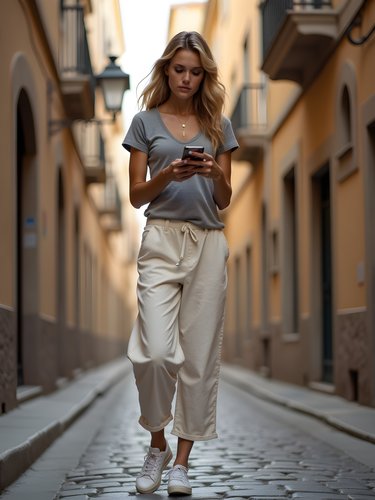









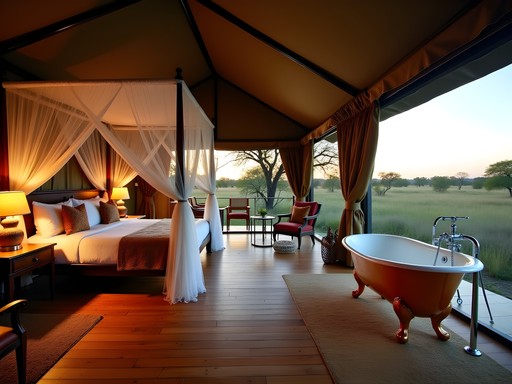
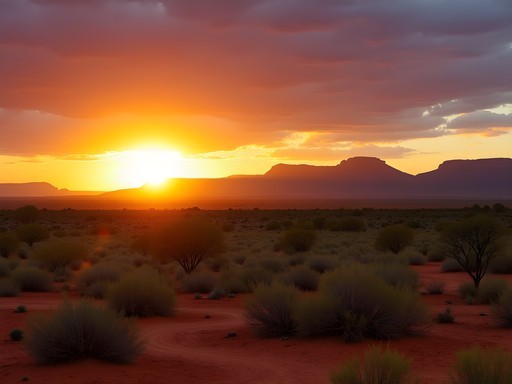


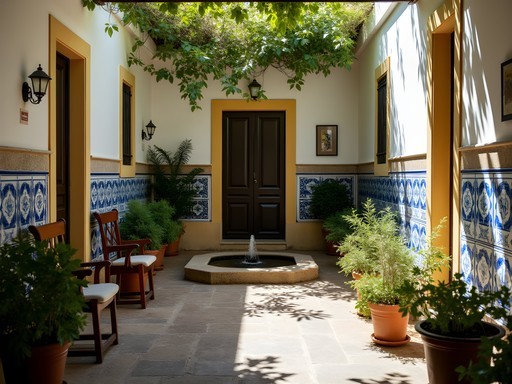
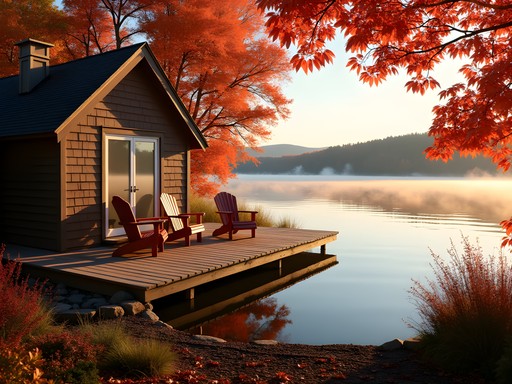
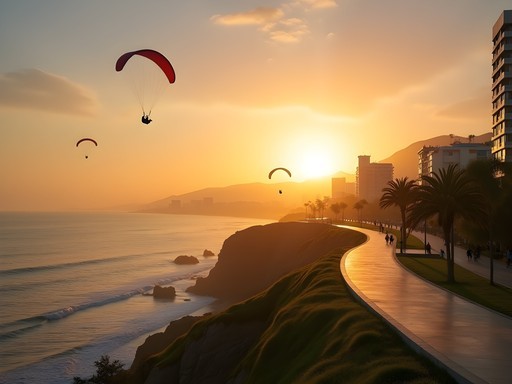
Comments
Casey Andersson
Claire, this post is refreshingly honest! I stayed at the Espinas Palace Hotel in Tehran last month - a bit of luxury after roughing it in other parts of Iran. What surprised me most was how fashion-forward young women in Tehran are, despite the dress code restrictions. The way they style their headscarves and manteaus is truly an art form! For anyone concerned about the dress code, I found it helpful to take screenshots of local women's Instagram accounts to get inspiration. The northern parts of the city, especially Tajrish and Darband, have a noticeably more relaxed vibe. And the contemporary art scene! The Tehran Museum of Contemporary Art houses one of the most valuable collections outside Europe and North America - a hidden gem many travelers miss.
happyperson
Love the photos from Darband! Those mountain cafes look magical. Adding Tehran to my bucket list!
triplover
Did you feel comfortable using public transportation? I'm planning a trip for October and wondering if I should stick to taxis or brave the metro.
explorenomad
Not Claire, but I found the metro super easy and safe! The women-only carriages are great, clearly marked with pink signs. Much faster than sitting in Tehran's traffic too!
Claire Hawkins
Completely agree with @explorenomad! The metro is efficient, affordable, and the women's carriages make it very comfortable. For areas not covered by metro, Snapp (Iranian version of Uber) is excellent and very safe.
Ana Robinson
Claire, your experience mirrors mine so closely! I traveled to Tehran with my 5-year-old daughter last spring, and we were overwhelmed by the kindness we received. People would stop to help us navigate, offer treats to my daughter, and even invite us to family gatherings. The Golestan Palace was magical for her - she felt like a princess! One practical tip for women traveling with kids: I found having a foldable scarf super handy for keeping essentials secure while still adhering to the dress code. Tehran's parks are also wonderful for families - Mellat Park has great play areas when kids need a break from sightseeing.
happyperson
Ana, did you find it easy to get around with a child? Were there any kid-friendly restaurants you'd recommend?
Ana Robinson
Absolutely! Taxis were super accommodating, and most restaurants welcomed children warmly. Definitely try Gol Rezaieh in the Tajrish area - traditional food but they brought special treats for my daughter and even had a small play area in the courtyard!
explorenomad
I visited Tehran last year and had such a similar experience! The hospitality was incredible - I was constantly being invited for tea or meals. One evening, I got lost near Grand Bazaar and an elderly couple walked me all the way back to my hotel, even though it was 20 minutes out of their way. The dress code was easier to navigate than I expected too. I found wearing a loose tunic over jeans with a colorful headscarf worked perfectly. The metro is also super easy and has women-only carriages which made me feel extra safe.
tripclimber
This is exactly what I needed! Been wanting to visit Tehran but was so nervous about going as a solo woman. Your post gives me courage!
Claire Hawkins
So glad it helped! Feel free to DM me if you have any specific questions about planning your trip!
tripclimber
Thanks Claire! Will definitely reach out when I start planning.
redfan7048
This completely changed my perspective on Tehran! I've always wanted to visit Iran but was hesitant because of all the negative news. How did you handle money there? I heard credit cards don't work because of sanctions?
Claire Hawkins
You're right about the banking restrictions - I had to bring all cash (Euros worked best) and exchange at official exchange offices. Keep receipts from official exchanges! Also brought a hidden money belt for safety, though I rarely felt concerned about theft. The economic situation means prices fluctuate, so budget a bit extra just in case.
redfan7048
Thanks for the tips! Did you find it expensive overall?
Claire Hawkins
Actually, quite the opposite! Due to currency devaluation, Iran was surprisingly affordable. Nice meals for $5-10, beautiful handicrafts at great prices, and quality accommodation for $30-40/night.
photoway
Those sunset photos over the Alborz Mountains are stunning! What camera did you use?
Claire Hawkins
Thank you! Just my smartphone actually - Google Pixel 6. Tehran's light at golden hour is a photographer's dream!
Douglas Bradley
Claire, this is a refreshingly balanced perspective on Tehran. I visited last year and had a similar experience regarding the disconnect between Western media portrayals and the reality on the ground. The Tehran Metro was surprisingly efficient and felt safer than many European systems I've used. One thing I'd add for solo female travelers is that family sections on public transport can be a godsend during rush hour. Also, the Tajrish Bazaar in northern Tehran offers a less touristy alternative to the Grand Bazaar, with some excellent small teahouses where locals were incredibly welcoming. Did you make it to the Contemporary Art Museum? The collection there is quite remarkable given the context.
Claire Hawkins
Thanks Douglas! Yes, the family sections on transport were a lifesaver. I did visit the Contemporary Art Museum - absolutely stunning collection! Tajrish Bazaar was also a highlight, much more relaxed shopping experience than the Grand Bazaar.
summerbackpacker
Adding Tajrish Bazaar to my list now, thanks!
mountainone
How did you handle the language barrier? Did you find many people speaking English or did you use a translation app?
Claire Hawkins
Great question! I found that in central Tehran, especially around universities and tourist areas, many younger people speak some English. I did use Google Translate with the Persian language pack downloaded for offline use, which was invaluable. Also learned basic Farsi phrases which locals really appreciated!
Venture X
Premium card with 2X miles, $300 travel credit, Priority Pass